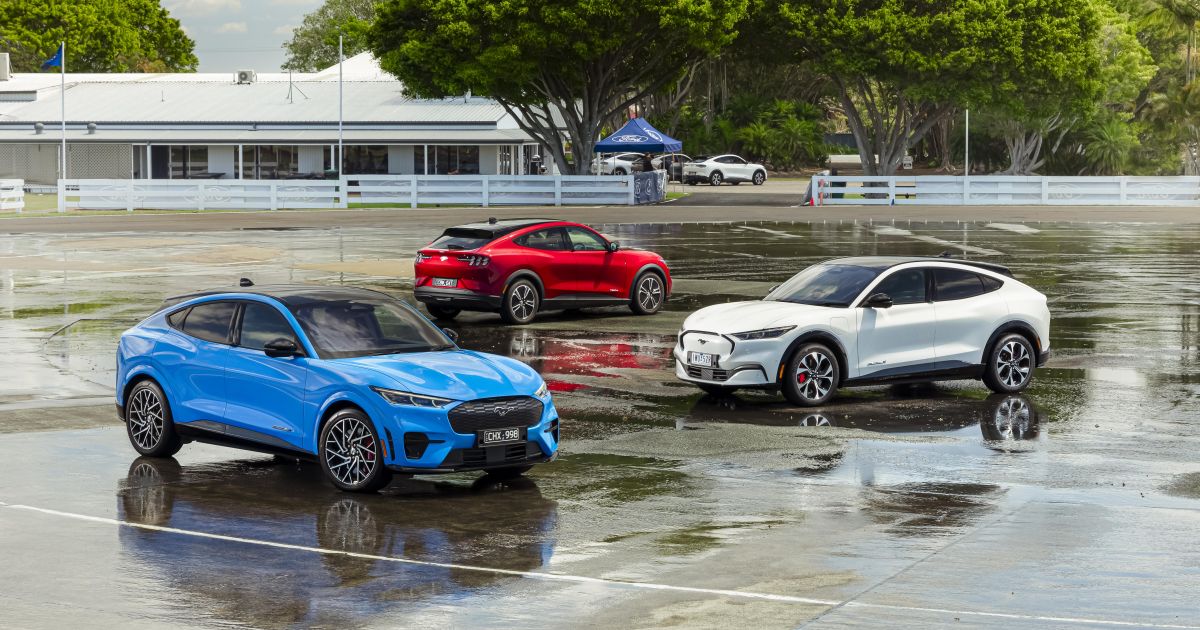Ford has posted a $US36 million ($A55.9 million) loss in the second quarter (April-June) of 2025, the least of the US ‘Big Three’ since the introduction of import tariffs in the United States (US).
In the first reporting period since US President Donald Trump introduced automotive tariffs – followed by broader tariffs unsettling the industry – Ford also announced a 22 per cent fall in earnings to $2.1 billion ($A3.26 billion).
Yet the automaker said it achieved record quarterly revenue during the period of $US50.2 billion ($A77.6 billion), up 5.5 per cent year-on-year.
Ford’s commercial vehicle division, led by products including the Ford Ranger, F-150 and Transit, was the biggest contributor to the result, with US$2.3 billion (A$3.56bn) in profits.
CarExpert can save you thousands on a new car. Click here to get a great deal.
The automaker continued to post losses on winding down its electric vehicle (EV) programs, with a $US1.3 billion ($A2.0 billion) loss after an $US849 million ($A1.3 billion) Q1 loss and $US5.1 billion ($A7.9 billion) loss for the full year 2024.
Ford’s announcement follows results from rival US company General Motors (GM) which posted a $US1.1 billion ($A1.7 billion) loss of the last three month to the end of June, laying the blame for the loss entirely on the introduction of tariffs on imported vehicles, materials and parts.
Rival Stellantis, Netherlands-based owner of iconic US brands Chrysler, Jeep, Ram Trucks and Dodge, posted a €2.3 billion (A$4.1 billion) loss for the first half of 2025.
Bill Ford – great grandson of company founder, Henry Ford – said after the April 2, 2025, introduction of tariffs the automaker was to be the least impacted, given it has the largest US manufacturing footprint.
US President Trump said the tariffs were designed to strengthen local manufacturing, with Ford since pushing the slogan “Ford Motor Company. From America. For America.”
On this week’s call, Ford said it expects the tariffs to cost more than previously, increasing its earlier $US1.5 billion prediction to $US2 billion ($A3.11 billion) for the full year in 2025, with a total impact estimated to be $US3 billion ($A4.66 billion).
The automaker took out a $US3 billion ($A4.66 billion) line of credit on July 29, the day before the earnings call.
It enacted counter measures when the tariffs hit, such as offering staff pricing to all US customers to stave off predicted increases in showroom prices and also capitalise on margins of vehicles not impacted by tariffs.
The move was followed by Stellantis for its brands in the US shortly after.
Ford chief financial officer Sherry House said higher-than-expected tariffs on parts as well as a doubling of the duties on steel and aluminium to 50 per cent were the reason for the predicted higher costs of tariffs.
“We recorded our fourth consecutive quarter of year-over-year cost improvement, excluding the impact of tariffs, building on progress we made last year when we closed roughly $1.5 billion [$A2.3 billion] of our competitive cost gap in material cost,” Ms House said in a statement.
“Our balance sheet keeps getting stronger, further enabling our ability to invest in areas of strength. We are remaking Ford into a higher-growth, higher-margin and more durable business — and allocating capital where we can compete, win and grow.”
Ford revised its earnings forecast for the year to $US6.5-7.5 billion ($A10.1-11.6 billion), having withdrawn previous guidance of $US7-8.5 billion ($A10.9-$13.2 billion).
MORE: Ford slowing electric car rollout as losses mount
MORE: Everything Ford




